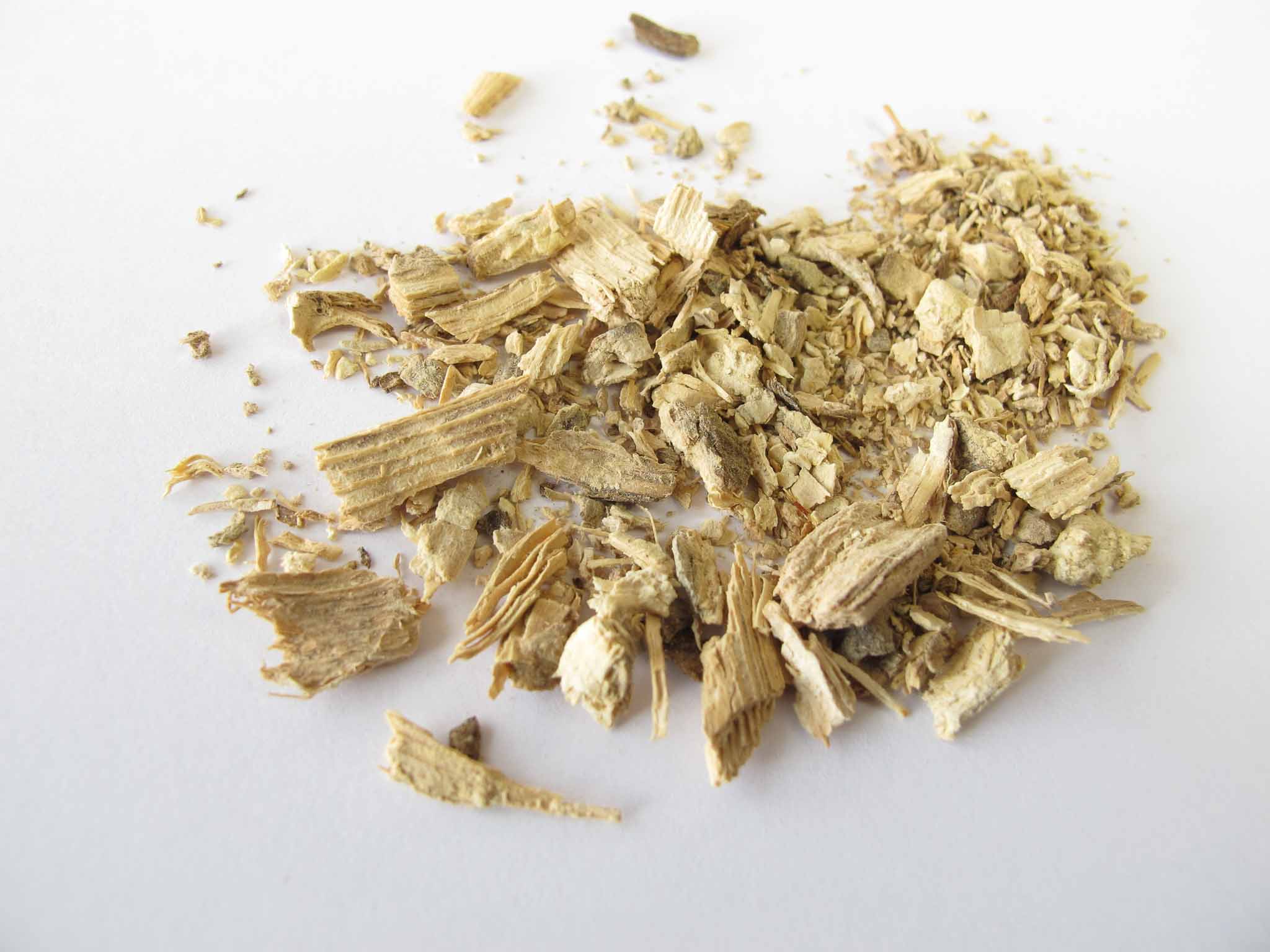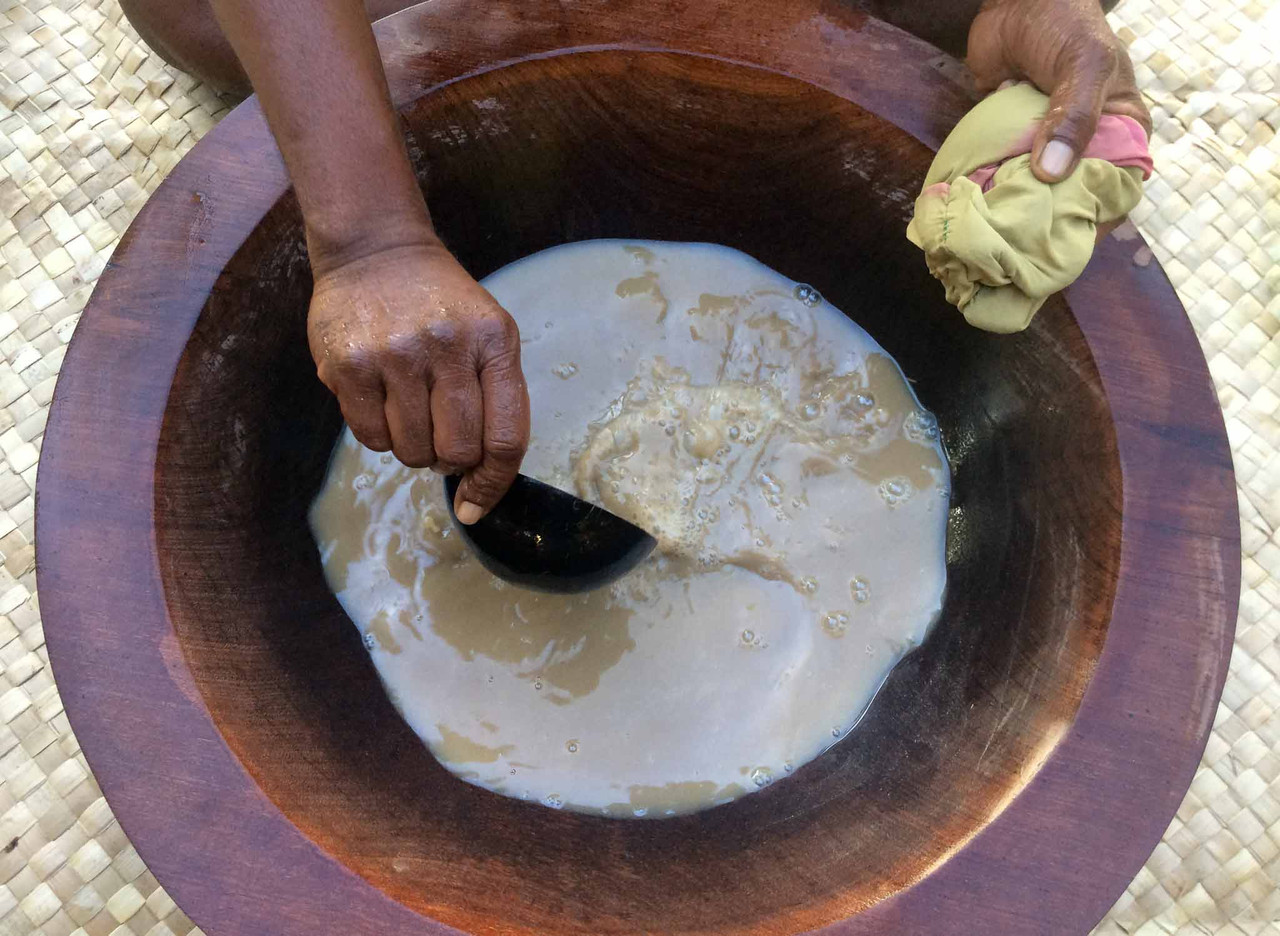Kava Root – A Natural Aphrodisiac and Empathogen
Tradition. Empathogen. Aphrodisiac
With rounded, heart-shaped leaves and small, delicate, spiked flowers, Kava is a vital, robust evergreen shrub that grows thick, stout rhizomes and fleshy stems. And this is where we get Kava Root from.
In Latin, Kava Root is known as Piper methysticum, which translates into English as the intoxicating pepper. Kava is native to the Pacific Islands, where indigenous people prepared and consumed a ceremonial drink made from those aforementioned thick, stout rhizomes.
Is it Kava Kava or Kava Root?
Short answer, both. Long answer, the botanical—the Latin binomial—of the plant is Piper methysticum. As a phytotherapeutic herb, only the root of Piper methysticum is used therapeutically. In that way, the prefix Radix would be added to the botanical name: Radix Piper methysticum.

When referring to the whole plant, Kava Kava is the common, colloquial name in the West for the plant. In that way, saying Kava Kava is correct. However, when referring specifically to the plant as a phytotheraputic herb and in speaking to its therapeutic qualities and properties, specifying the part of the plant used is helpful: Kava Root. In fact, the above ground—aerial—parts of Kava may pose some toxicity, so the distinction between Kava and Kava Root isn't purely semantics. It's a crucial distinction (see below for more on this).
Kava Root as an Aphrodisiac
While most people do not immediately think aphrodisiac when they think of Kava Root, Kava Root has enjoyed a long history of use as an aphrodisiac. The mythological origin story about how Kava Root was first discovered references its sexual nature.
The Mythological Origin of Kava Root
Set in the South Pacific Islands, perhaps on Vanuatu or Fiji, the myth recounts the following story:
Two sisters left the village to go out to gather wild yams. After securing the day’s plentiful harvest, the sisters began to wash them at the river’s edge. But long before the sisters were born, nor their mother nor their grandmothers were born, a passing warrior came to that very river’s edge and planted a Kava Kava seedling. Time passed. Millennia passed. And so, as the sisters washed the wild yams at the river’s edge, the Kava Kava sprouted and brushed against the younger sister, for she wasn’t wearing much more than a wrap.
Confused and overcome with a most pleasurable sensation, the younger sister asked the elder sister, “What is this source of my happiness?” The elder sister looked down and found the source—the Kava Kava seedling. The two saw the significance of the plant, carefully harvested it, and brought it back to introduce at their village, and such was it that the use and domestication of Kava Kava—Piper methysticum—was borne.

The Effects of Kava Root
Kava Root as an Empathogen
Today, much of the attention paid to Kava Root is for its sedative, relaxant, and anxiolytic (anti-anxiety) effects. When spoken about chemically, Kava Root is technically an empathogen, a substance—a drug—that produces feelings and experiences of emotional awareness and receptivity, communion, oneness, and openness. In short, empathogens promote empathy. For many, low libido—or none at all—stems in part from a lack of these very qualities. By building empathy, we allow sexuality to course through us. Kava Root is an important aphrodisiac. But to appreciate its ability, we have to divorce our thinking of Kava Root as an alcohol analogue.
Kava Root vs. Alcohol
While some may associate alcohol with sexuality, in the long term, alcohol blunts the ability to emotionally connect—and physiologically perform. At first, it may seem easier to forge emotional connections under the siren’s song of alcohol, but it is a deterrent to building long-lasting emotional connections to others, simply because it blunts awareness of the self and of the other. Alcohol can make a person feel invincible because it makes them blind to other people. This is in stark contrast to Kava Root, which makes a person more aware, more connected to other people and even to themselves—which might just be the most important need for people today.
The active compounds of Kava Root are the kavalactones (also known as kavapyrones). According to Wikipedia, kavalactones produce a myriad of effects in the body, “including amnestic, analgesic, anticonvulsant, anxiolytic, nootropic, and sedative/hypnotic activity caused by numerous interactions with the central nervous system via a myriad mechanisms.” Eighteen different kavalactones have been identified, the first one identified being methysticin, and fifteen of them are currently considered to be “active.” The active compounds in Kava Kava give it its empathic qualities, making it a superb addition to our Arrow of Eros Vital Fire Elixir Tincture.
Incorporating Kava Root Into Your Home Apothecary
We have several guides for ways to use Kava Root and to incorporate it into your home apothecary:
- Aphrodi-Tea: The Elixir of Aphrodite
- Aphro-Tea-siac or Aphro-Chai-siac? More Lovers' Tea
- Aphrodisiac Masala Chai Recipe and Guide.
Addressing Health Concerns With the Use of Kava Root
Additionally, any discussion about using Kava Root would be amiss without mentioning that, by definition, Kava Root is an intoxicant, and as such, it needs to be used responsibly. You can read a bit about this in our Pine Pollen FAQs, where we have a write-up on Can I Use the Arrow of Eros Vital Fire Elixir Tincture Daily?
It is also worth mentioning that in the past, there were warnings about the potential impact—harm—of Kava Root on the liver. Research has indicated that the use of the whole plant may have liver toxicity, but that the root itself does not. In the late 1990s and early 2000s, during an explosive growth in the use of Kava Root, unscrupulous companies profited by selling the whole plant, not just the root. It was hypothesized that this was the cause of the reported cases (which were very few) linking Kava Root to hepatotoxicity. Unlike the root, the aerial—above-ground parts—of Kava do contain toxic alkaloids. At RAW Forest Foods, we only use the root of Kava, never the above-ground parts.
More recent research and literature reviews still cannot find a direct connection between the use of Kava Root and liver injury. It is true that the kavalactones are metabolized by the liver (Cytochrome P450), but this does not mean they cause liver harm. Interestingly, researchers note that no liver toxicity is reported in the South Pacific, where Kava Root consumption is widespread. To learn more, see this 2021 study by by Wang et al .
With responsible use, which includes responsible sourcing, we have no concerns about the safe use of Kava Root. But we encourage you to do your own research.
This blog post was originally titled The Aphrodisiac Qualities of Kava Kava (Piper methysticum).
Site Disclaimers
General Guidence
The content on this site is provided for educational and informational purposes only and should not be construed as medical advice. Always consult a qualified healthcare provider before making changes to your diet, lifestyle, or health regimen, particularly if you are pregnant or nursing, under the age of 18, managing allergies or known sensitivities, or living with any medical conditions.
At RAW Forest Foods, your safety is our priority. Please note that our products are dietary supplements, not medications. The following disclaimer applies:
* These statements have not been evaluated by the Food and Drug Administration. These products are not intended to diagnose, treat, cure, or prevent any disease.
Ingredient Transparency and Allergen Awareness
We are committed to providing transparent ingredient information to help you make informed decisions. If you have or suspect you have allergies to any of our ingredients, we strongly advise against using our products, as allergic reactions can be severe.
Interaction with Medications
If you are taking any medications, consult with your healthcare provider before using supplements. Certain supplements may interact with medications, potentially altering their effectiveness or causing unwanted effects.
For more details, please review our full Terms and Conditions.






